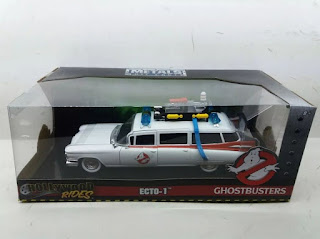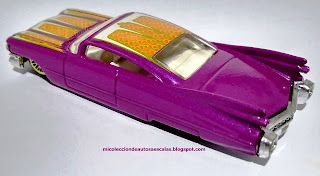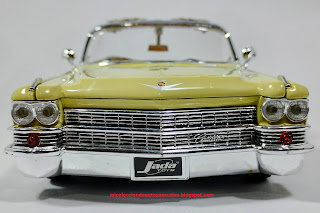Este es un blog de fotografías para la colección personal de autos de diferentes escalas.
Monday, July 7, 2025
2016 Cadillac ATS-V R Hot Wheels 1:64
Monday, May 14, 2018
Tuesday, February 14, 2017
1959 Cadillac Custom Hot Wheels 1:64
From Fandom:
The Custom '59 Cadillac is a Hot Wheels casting which debuted in the 2002 First Editions Series and was designed by Mark Jones. It is based on a cutsomized version of the real-life 1959 Cadillac Eldorado with the most notable custom feature its 'chopped' roofline.
It has seen several releases over the years, with one being the 2006 Treasure Hunt release with a rare black interior. Some of these were found included with Hot Wheels backpacks, while some were found on the Treasure Hunt card.
For the convertible version, see '59 Caddy.
Thursday, July 7, 2016
1935 Cadillac Hot Wheels 1:64 The '35 Classic Caddy
From Fandom:
The '35 Classic Caddy is a Hot Wheels licensed model designed by Larry Wood. It is modeled after the Cadillac Series 355. The Cadillac Series 355 was manufactured by Cadillac from 1931 to 1935. They were 8-cylinder cars, sold in several models: a 2-door club coupe, a 2-door convertible, 4-door convertible, a 4-door sedan a 4-door town car and a 4-door limousine
The 1935 Model 355E was divided into three series, the Series 10, 20 and 30. Bodies on the Series 10 and 20 were built by coachbuilder Fisher and on the Series 30 by coachbuilder Fleetwood. Styling emphasized streamlining, including concealment of all chassis features except the wheels. Body construction was improved for better insulation against engine heat and reduction of engine, road and wind noise. The grille was V-shaped and sloping, set into a painted shell. Although restricted use of chrome was a feature of the overall ornamentation, a chrome plated radiator shell was available as an option. Horns and radiator filler cap were concealed under the hood. Teardrop Guide Multibeam headlights were mounted on streamlined supports attached to the fenders. Parking lamps were mounted on the headlight supports. Airfoil shaped fenders were brought low over the chassis. The hood sills were high with the entire fender shape molded into the radiator shell. A curious horizontal crease broke the nose contour of the fenders. Hoods extending nearly to the windshield carried shutter-type louvers in the side panel.
The diecast model features two spare tires with covers, an open driver's compartment and an enclosed passenger compartment. The model has the distinct grille and hood louvers.
Saturday, November 14, 2015
1963 Cadillac Series 62 Scarface Jada 1:24
Sunday, July 21, 2013
2009 Cadillac CTS-V Hot Wheels 1:64
From Fandom:
'09 Cadillac CTS-V. Debut Series: 2010 New Models. Produced: 2010-Present. Designer: Josh Henson. Number: R0925.


















































